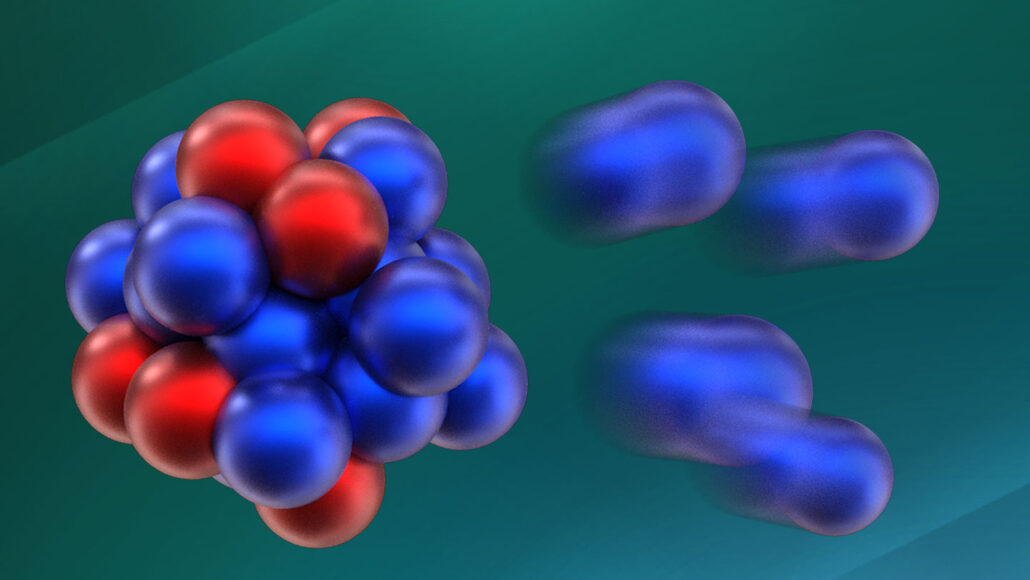Scientists Stunned by the Unexpected Instability of Detected Oxygen-28

A “magic number” of physics might not be so magic after all.
Using a powerful particle accelerator, researchers have spotted an elusive variant of oxygen for the first time. The isotope, oxygen-28, was predicted to be stable thanks to its eight protons and 20 neutrons — “magic” numbers associated with extra stability in atomic nuclei. But the first observations of oxygen-28, reported in the Aug. 31 Nature, reveal that it is more ephemeral than enduring: Its nuclei crumble after about a zeptosecond (or 0.000000000000000000001 seconds).
The finding “was a big surprise,” says physicist Rituparna Kanungo of Saint Mary’s University in Halifax, Canada who was not involved in the study. “We do have several state-of-the-art theories that tried to predict and explain what oxygen-28 should look like,” Kanungo says, but “none of them is able to explain [the observations].”
Atomic nuclei are made up of protons and neutrons, each of which are thought to occupy their own “shells” — discrete energy levels that are separated by large energy gaps. Atomic nuclei with full outer shells are bound extra tightly, making them very stable. Shells fill up when they hit two, eight, 20, 28, 50, 82 and 126 subatomic particles (SN: 10/9/13).
Atoms of a particular element have a set number of protons but can have varying numbers of neutrons. For instance, the air we breathe contains the isotope oxygen-16, which has eight protons and eight neutrons. This makes it “doubly magic” and extraordinarily stable. Oxygen-28, doubly magic with its 20 neutrons and eight protons, was expected to be stable too.
Finding the isotope took a combination of brute force and experimental elegance. Physicist Yosuke Kondo of the Tokyo Institute of Technology and colleagues used a particle accelerator to smash calcium-48 atoms against a beryllium target. This fragmented the calcium-48 atoms into lighter isotopes, including fluorine-29. Throwing the fluorine-29 against a liquid hydrogen target knocked off a single proton, producing oxygen-28.
Contrary to expectations, the oxygen-28 fell apart almost immediately. Like a bucket filled with too many balls, its overstuffed nucleus overflowed, sloughing off four neutrons and leaving oxygen-24 behind. By detecting these decay products simultaneously, the scientists showed that they’d made oxygen-28.
Oxygen-28’s surprising instability hints that there’s something missing from scientists’ current theories about the strong nuclear force, which binds protons and neutrons in atomic nuclei. “I think this is going to probably trigger a lot of theoretical developments,” Kanungo says. “That’s pointing again to this very highly challenging task of understanding completely the strongest force of nature.”
Our mission is to provide accurate, engaging news of science to the public. That mission has never been more important than it is today.
As a nonprofit news organization, we cannot do it without you.
Your support enables us to keep our content free and accessible to the next generation of scientists and engineers. Invest in quality science journalism by donating today.




